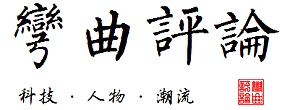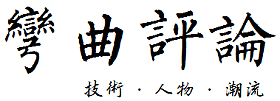美国名校计算机教授的背景分析
作者 陈怀临 | 2014-05-27 09:35 | 类型 行业动感 | Comments Off
|
[原文科参阅:http://jeffhuang.com/computer_science_professors.html ] Analysis of Over 2,000 Computer Science Professors at Top UniversitiesThe Educational Backgrounds of Professors and the Composition and Hiring Trends of US Universities As part of a class assignment in my human-computer interaction seminar, students used crowdsourcing to collect information about the computer science professors from 5 universities each. This information comprised the names, institution, degrees obtained, and when they joined the university, for professors in the traditional role that involves both research and teaching. The data excludes lecturers, professors of practice, clinical, adjunct, affiliate, or research professors; only because we were constrained by time and resources. My Ph.D. student Alexandra Papoutsaki worked with a handful of students in the course to correct, normalize, and merge the data, and has posted it along with some descriptive information. The posted data includes 51 top universities in the United States and is already useful for students planning to apply to graduate schools, but there are some interesting insights that we can still draw from a more aggregate analysis. This analysis is meant to supplement the data and Alexandra’s report, and looks more at:
Composition of Computer Science DepartmentsOne way of looking at department composition is the ranks of professors currently in the department. Having more assistant or associate professors indicates recent hiring, while having nearly all full professors usually means the department has kept the same professors for a while, or makes mostly senior hires. Here are the numbers for the universities in our data, sorted in descender order by percentage of full professors.
The data includes the primary subfield a professor does research in, and it might be interesting to see how the research subfields are represented in each department. The subfields are chosen based on a taxonomy from Microsoft Academic Search, but while we do have the numbers for each subfield, they are too small to show trends so I categorized them into broader research areas:
Informatics is a bit of a catch-all, but they are subfields that are somewhat more applied towards directly solving everyday human problems, whereas Systems is about improving computing itself, and Scientific is towards the goal of scientific progress. Obviously you may disagree with the categorization like some “Security & Privacy” folks lean more towards Theory, but I used my best judgment and you are welcome to perform your own analysis if you disagree with mine. The research areas are illustrated in the following table, sorted by proportion of professors in Theory:
It’s clear that there are some universities with more emphasis on theory, and others that lean more towards informatics or systems. But one surprise is that 9 of the 10 most theory-heavy universities are private universities, whereas 9 of the 10 least theory-heavy universities are public. That is quite a contrast, and I don’t have an explanation for this. Update: Marc Snir from the University of Illinois sent an email to explain, “Public universities, especially land-grant universities, are more engineering-oriented. They were founded to promote the practical arts of agriculture and machinery. Private universities, especially the ivy leagues, are more science oriented.” Hiring Trends of UniversitiesWe can also see when the research areas were hired by combining that field with the “join year” plotted on the x-axis. Here are the trends from 1990 to 2014 (2014 hiring is grossly underreported since it is still ongoing).
One thing that is clear is that there is growth in computer science, mainly in Systems and Informatics in the past couple years. It looks like these 51 universities have been hiring about 100 professors per year (although this includes transfers). I would love to see the trends more clearly but we are missing join years for many professors; this information is sometimes quite difficult to find. Now which universities have been doing the hiring? Here are the number of computer science professor hires a university has made in the last 7 years, and what percentage of their professors are recent hires. It should be expected that larger computer science programs top the list and between 20-42% of their professors are recent hires.
Do universities hire their own Ph.D. students? Some computer science departments engage in the practice of “self-hires” frequently, in fact 39% of the professors at MIT received their degree there. Of course, the data here doesn’t differentiate from those who become professors right after receiving their Ph.D., and those who left to other institutions and returned later.
Educational Background of ProfessorsIt is possible to become a Computer Science Professor without a Doctorate degree. But 99.72% of professors in the data have a Ph.D., so you may be at a slight disadvantage if your highest degree is a Masters. The data provides us a look into what universities a professor received their education. Where did they get their bachelors and doctorate degrees? If a graduate from a university is listed in spreadsheet, I call it a “placement”. The below table shows universities whose graduates make up at least 1% of professors on the list. Over 20% of professors received their Ph.D. from MIT or Berkeley, while more than half of professors received their Ph.D. from the 10 universities. Note how closely the ranking of total placements from the Ph.D. granting institution matches the US News Computer Science Rankings.
However, it’s obvious that some departments are smaller and thus tend to graduate fewer doctoral students. The fourth column (placement ratio) shows the number of Ph.D. students that go on to become a professor normalized by the size of the department. In other words, the average number of a professor’s Ph.D. graduates who become professors. For bachelors degrees our data is less complete, but for the professor who we have data, here is where they completed their undergraduate education:
It’s no surprise that there is more diversity in undergraduate institutions than in Ph.D. programs. In fact, there are several institutions in India (IITs) and one from China (Tsinghua University) whose graduates successfully become a professor in the United States. An aside: should you stay or should you go? Students are sometimes discouraged from obtaining their bachelors and doctorate degrees from the same institution because it may limit a students’ diversity of experiences, but the data shows that many still end up as professors: 230 (13.6%) stay at the university for both degrees, while 1,456 (86.4%) leave elsewhere for their Ph.D. The practice of staying occurs most commonly at MIT. Final NotePlease understand that much of the data is generated by anonymous crowd workers, and is inaccurate and incomplete. Only the columns “name”, “university”, “subfield”, “rank”, and “doctorate” are complete for all professors. we are aware of these problems and you may help us improve the data by tagging comments on the spreadsheet cells (we have addressed hundreds of errors already). We would love to add more universities, more columns in the data, include other faculty like research professors, but simply do not have the time and resources. So if you would like to see those in the data and have spare time, we would be thrilled to receive your contribution. These figures were generated from data from the spreadsheet that was recent as of May 24, 2014.
| |














